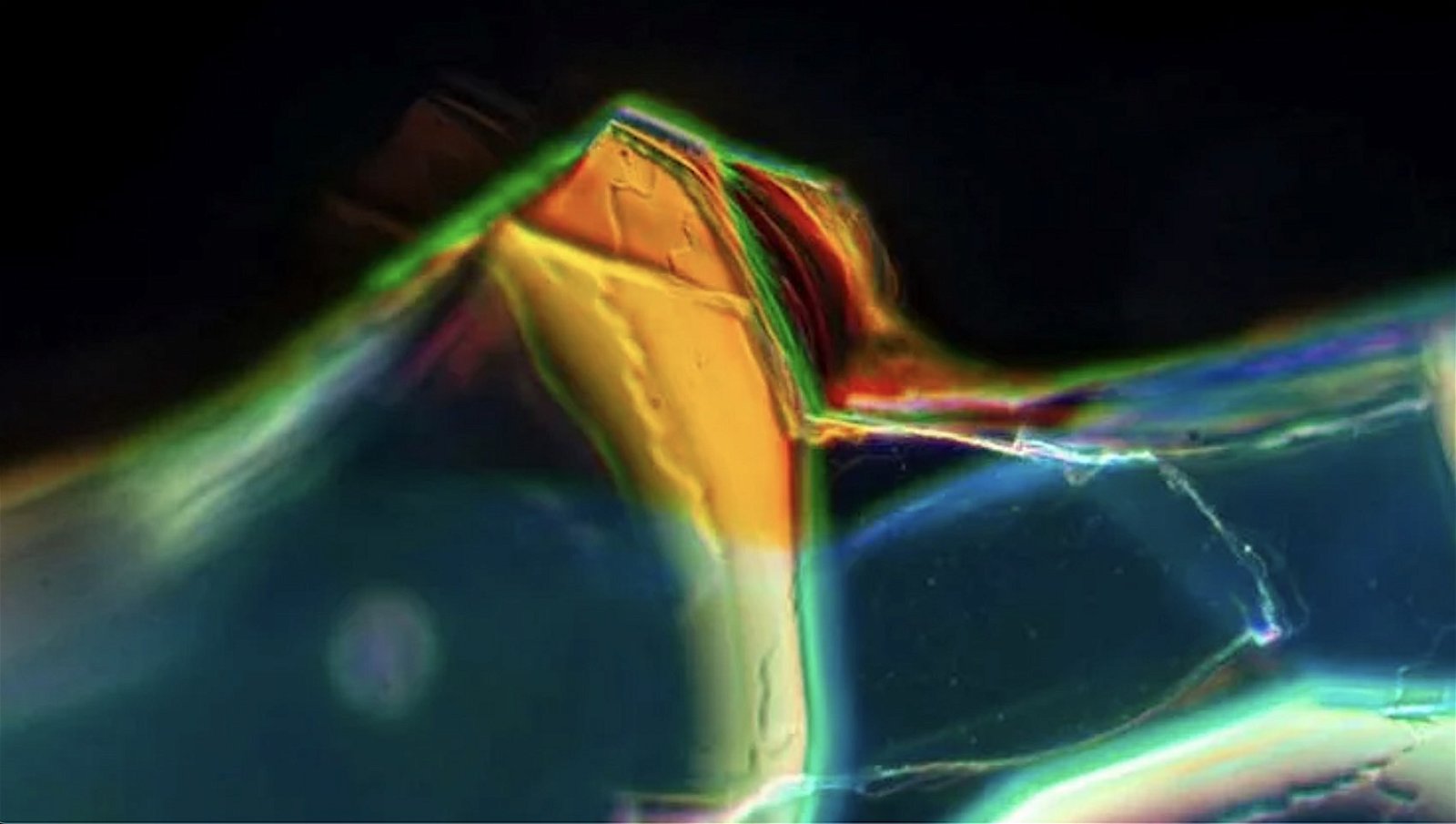Scientists have unearthed something remarkable at several ancient Roman archaeological and construction sites, revealing artifacts coated in a naturally formed substance with unique modern technological potential.
Fragments of ancient Roman glass vessels, having shattered long ago and left beneath the accumulation of earth over time, are known to possess striking, colorful surfaces that result from their exposure to minerals in their soil covering, along with changes in temperature and other environmental conditions they encounter over the centuries.
Now, scientists have learned that the fragments, which have been used in the creation of modern jewelry over the years due to the vivid tapestry of iridescent tones they showcase, offer much more than just beautiful colors that capture the human eye.
Engineering professors Fiorenzo Omenetto and Giulia Guidetti at Tufts University’s Silklab and their colleagues say they have learned that the molecular structure of these tiny Roman glass shards become rearranged over thousands of years, resulting in the formation of what physicists call photonic crystals.
Nature’s Nanostructures
Photonic crystals are tiny nanostructures possessing ordered arrangements of atoms, which can produce unique optical effects in the way they filter and reflect light. These crystals are found in nature in various animals that have evolved to produce reflective iridescent coloration, including various kinds of fish and other organisms.
Scientists have had success with engineering them artificially as well, with their various uses found in everything from optical switches and communications devices to waveguides, lasers, mirrors, and even stealth technologies.
However, the presence of photonic crystals on the shards of ancient Roman glass hadn’t necessarily been the first thing that came to mind for the research team.
“This beautiful sparkling piece of glass on the shelf attracted our attention,” Omenetto later admitted about a particular shard recovered from a site close to modern-day Aquileia, Italy, which was once a Roman city on the Natiso River.
The glass, which the team affectionately called the “Wow glass,” was soon revealed to be a photonic crystalline nanofabrication.
“It’s really remarkable that you have glass that is sitting in the mud for two millennia and you end up with something that is a textbook example of a nanophotonic component,” Omenetto recently said in a statement.
Photonic Crystals Grown on Ancient Roman Glass
Omenetto, Guidetti, and their colleagues say they detected unique atomic and mineral structures, which over time were generated from exposure to the environmental conditions surrounding the Roman glass that included changes in the pH and variances in the groundwater present.
The glass, which is believed to date to sometime between 100 BCE and 100 CE, may have its origins in Egyptian sand, according to a recent analysis.
“The crystals grown on the surface of the glass are also a reflection of the changes in conditions that occurred in the ground as the city evolved—a record of its environmental history,” Guidetti said in a statement.
In addition to its age and origins, the team was able to reveal its structural composition and elemental analysis with the aid of scanning electron microscopy.
The unique, golden mirrored patina on the exterior of the glass, the team says, is the result of what are known as Bragg stacks, which are structures that form layers of silica with alternating degrees of higher and lower density.
Guidetti said the formation of these structures is “likely a process of corrosion and reconstruction,” where he says the soil and minerals surrounding the glass shards, combined with rainwater and other factors, “determined the diffusion of minerals and a cyclical corrosion of the silica in the glass.
“At the same time, assembly of 100 nanometer-thick layers combining the silica and minerals also occurred in cycles,” Guidetti adds. “The result is an incredibly ordered arrangement of hundreds of layers of crystalline material.”
Guidetti and the team hope that the processes that give rise to these unique atomic and material properties could be replicated and accelerated in the lab, which could help researchers uncover ways of growing optical materials rather than having to manufacture them.
Omenetto, Guidetti, and the team’s findings were the focus of a recent study published in the Proceedings of the National Academy of Sciences titled “Photonic crystals built by time in ancient Roman glass.”
Micah Hanks is the Editor-in-Chief and Co-Founder of The Debrief. He can be reached by email at micah@thedebrief.org. Follow his work at micahhanks.com and on Twitter: @MicahHanks.

